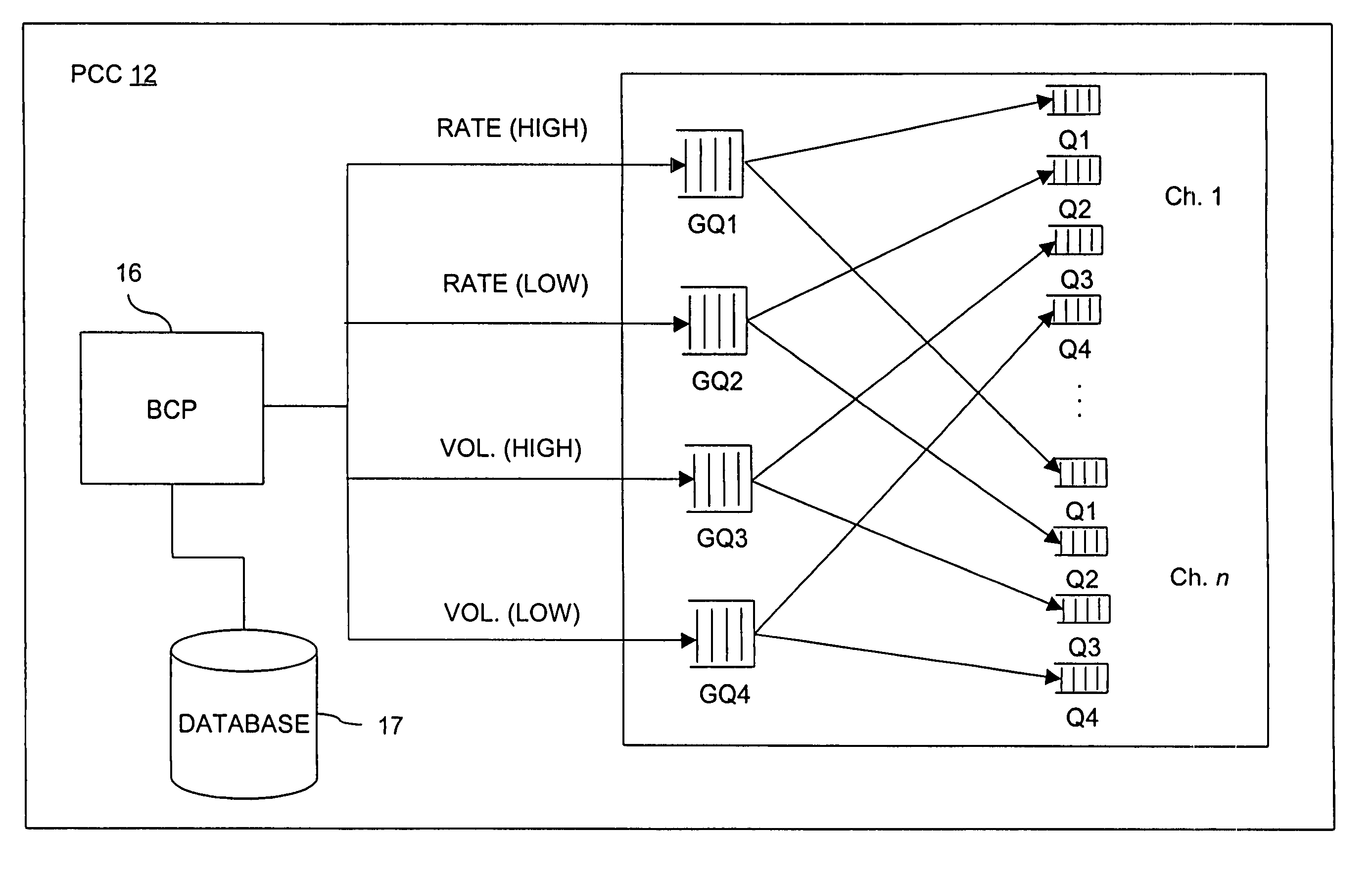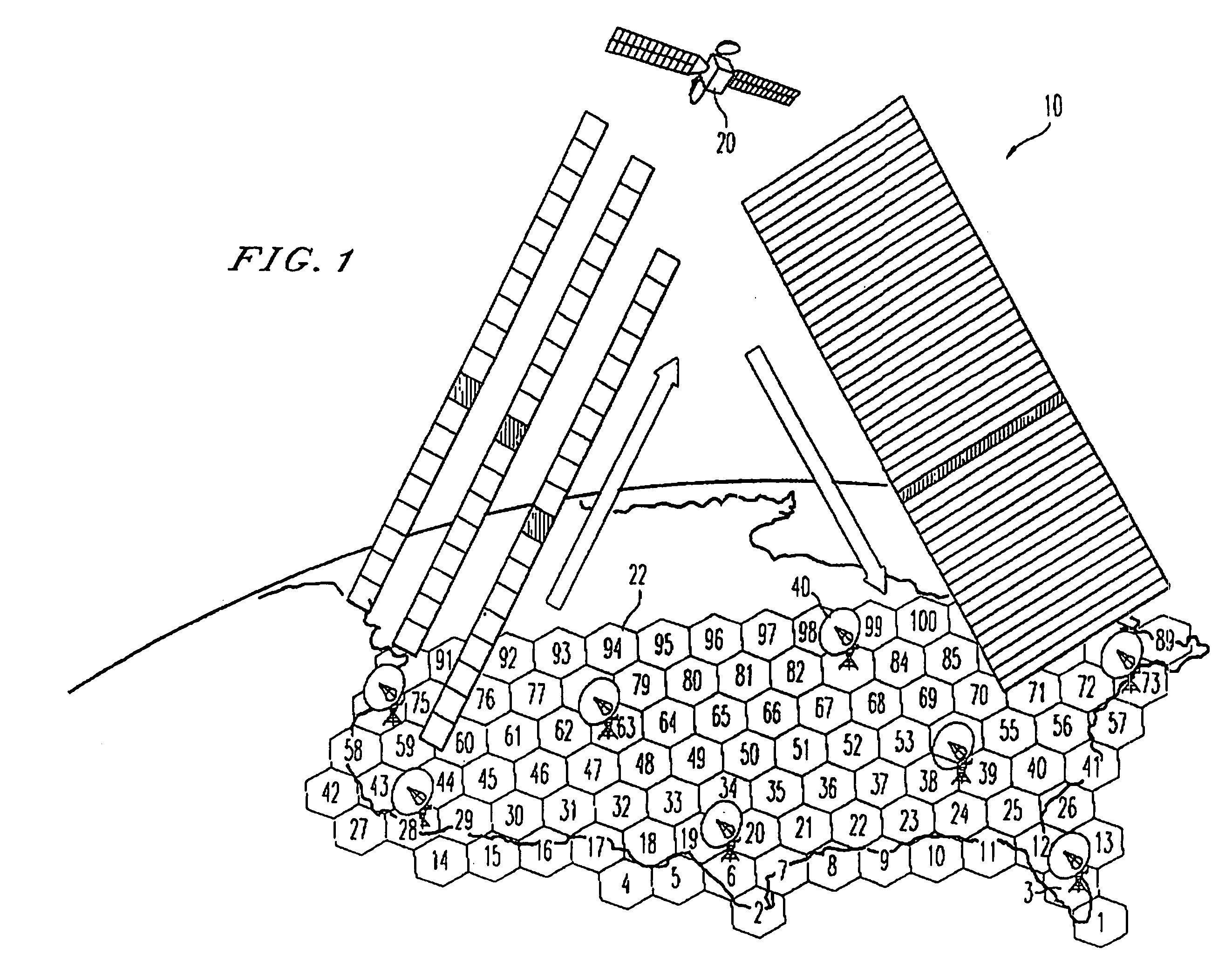Method and system for providing satellite bandwidth on demand using multi-level queuing
- Summary
- Abstract
- Description
- Claims
- Application Information
AI Technical Summary
Benefits of technology
Problems solved by technology
Method used
Image
Examples
Embodiment Construction
[0024]With reference to FIG. 1, the broadband multimedia satellite system 10 of the present invention preferably employs one or more geosynchronous orbit (GEO) satellites 20 and offers a wide range of user data rates and services on a bandwidth-on-demand (BOD) basis. The system 10 uses the latest generation of high-power satellites, employing on-board digital signal processing, multiple high-gain spot beams, and on-board packet routing. The broadband multimedia satellite system 10 is preferably capable of supporting a maximum peak capacity of at least 10 Gigabits per second (Gbps) of user data in a point-to-point (PTP) transmission mode. Delivery of services to users is provided via low-cost ultra-small-aperture terminals (USATs) hereinafter referred to as satellite terminals (STs) 40. An ST 40 can be an end-user ST or a network ST (NST), as shown in FIG. 2A. The broadband multimedia satellite system 10 preferably operates in the 30 / 20 GHz Ka-band spectru...
PUM
 Login to View More
Login to View More Abstract
Description
Claims
Application Information
 Login to View More
Login to View More - R&D
- Intellectual Property
- Life Sciences
- Materials
- Tech Scout
- Unparalleled Data Quality
- Higher Quality Content
- 60% Fewer Hallucinations
Browse by: Latest US Patents, China's latest patents, Technical Efficacy Thesaurus, Application Domain, Technology Topic, Popular Technical Reports.
© 2025 PatSnap. All rights reserved.Legal|Privacy policy|Modern Slavery Act Transparency Statement|Sitemap|About US| Contact US: help@patsnap.com



